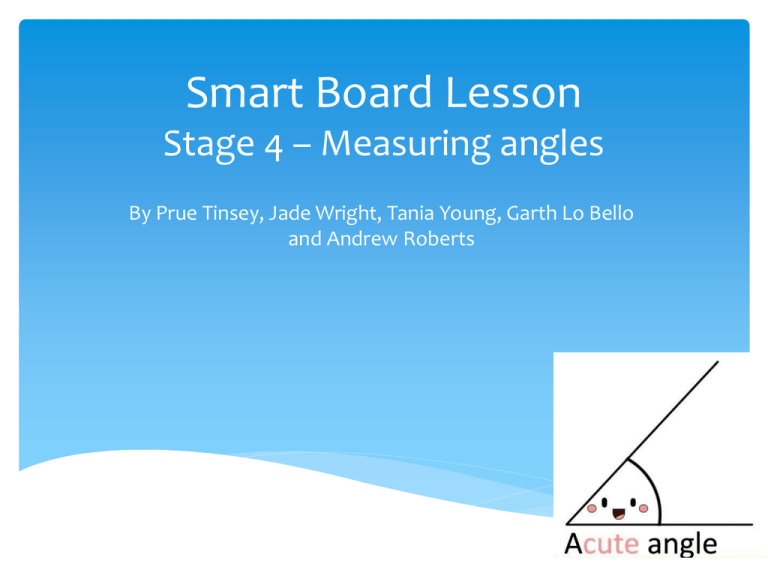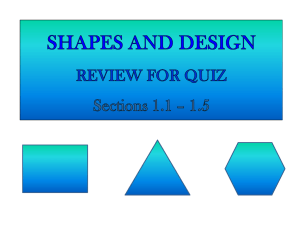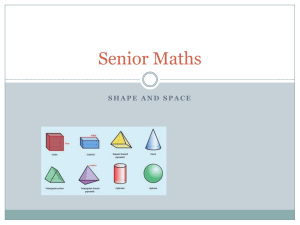Smart Board Lesson Stage 4 * Measuring angles
advertisement

Smart Board Lesson Stage 4 – Measuring angles By Prue Tinsey, Jade Wright, Tania Young, Garth Lo Bello and Andrew Roberts Smart Notebook has many features that can assist teachers to help students gain a thorough understanding of the relationships between angles. The Smart Notebook lesson provided is an example of many of these features and can be used as a scaffold for teachers in the classroom. Features An engaging method of teaching students about angles. It encourages class collaboration and discussion and teachers can encourage student participation through using the Smart board. Features This feature of Smart Notebook, allows students to have a visual representation of the different angle types. The teacher can again gain class participation by getting students to use smart notebook to write the size of the angle next to the name. E.g. below Features The interactive protractor tool, allows students to measure many angle with ease. It is identical as using a normal protractor, so they are still learning a useful skill. This feature also allows the students to generate an output (as seen below). Students should try and read the measurement on the protractor and then press the out put arrow to get the answer, allowing them to check if the are correct. Measuring Real-life things! Engage students more by getting them to find images on the internet and measure the angles. For example measuring the angles on this bike. Activity Using GeoGebra and Smart Notebook software, in pairs students must investigate the angle relationships of parallel lines, cut by a transversal. Task 1. Students must generate a pair of parallel lines in GeoGebra. Copy and paste this into Smart Notebook. 2. Using the interactive protractor on Smart Notebook, investigate the size of all the angles. 3. Research the meaning of vertically opposite, alternate, corresponding and cointerior angles. 4. Label these on your diagram. 5. Using the train tracks image. Create a transversal through them. Measure the angles to prove they are parallel. Once again, label the angles above on this diagram. 6. Investigate whether the 2 lines on this bike are parallel.











